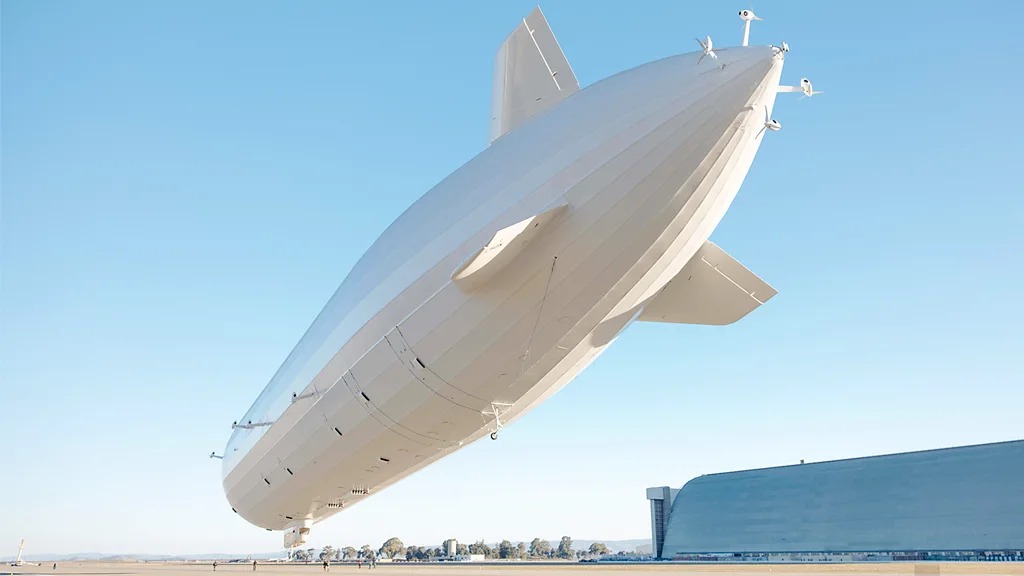
Pathfinder 1: The Airship That Could Usher in a New Age
Pathfinder 1, a project bankrolled by Google co-founder Sergey Brin, marks a significant step toward reviving airship technology. This innovative rigid airship, developed by LTA Research, took its first untethered flight on October 24, 2024, at NASA’s Moffett Field in California. This milestone reignites interest in airships nearly a century after their decline due to high-profile disasters.
The Return of Rigid Airships
Airships are hard to hide, and despite the secrecy surrounding Pathfinder 1, aviation enthusiasts quickly caught wind of its progress. Alan Shrimpton, editor of the Airship Journal, remarked, “This is the first fully rigid airship of this size since the 1930s. LTA Research took their time to ensure they got it right.”
The last major rigid airship, the Graf Zeppelin II, flew in 1939 before the onset of World War II. Unlike its predecessors, Pathfinder 1 is constructed with modern materials, addressing many of the safety concerns that plagued early airships. The use of helium instead of hydrogen significantly reduces the risk of fire, a lesson learned from the infamous Hindenburg disaster of 1937.
Pathfinder 1’s Innovations
Pathfinder 1 is not a historical replica but a proof-of-concept airship that integrates cutting-edge materials and technology. LTA Research aims to resolve a critical challenge: how to mass-produce rigid airships efficiently. The company plans to scale production at the Goodyear Airdock in Akron, Ohio, a site historically associated with large-scale airship manufacturing.
Some of the significant advancements in Pathfinder 1 include:
- A Modernized Frame: Unlike early rigid airships made from aluminum alloys, Pathfinder 1 incorporates stronger and lighter materials, such as carbon fiber and titanium.
- Enhanced Aerodynamics: The tail fins are angled instead of in a traditional cross shape, reducing damage during mooring.
- Advanced Propulsion: The engines are staggered along the airship’s length to minimize drag and vibration.
- Computerized Flight Controls: Cutting-edge avionics and sensor technology provide real-time adjustments, improving stability and safety.
The Challenges of Airship Revival
Despite the excitement, skepticism remains. Airship manufacturing is notoriously complex, and past attempts at revival have failed to gain momentum. Janne Hietala, CEO of Kelluu Airships, acknowledged the difficulties: “Mass-producing airships of this size is incredibly challenging, but LTA Research’s methodical approach could change that.”
One of the biggest hurdles is the cost and availability of helium. While helium is safer than hydrogen, it provides less lift and is expensive. This trade-off raises concerns about the long-term feasibility of large-scale airship operations.
A Potential Game-Changer for Aviation
Diana Little, co-founder of Anumá Aerospace, believes airships could play a role in decarbonizing aviation. “Airships offer a sustainable alternative to conventional aircraft, reducing carbon emissions for cargo and passenger transport,” she noted.
Investor interest has historically been cyclical, with new airship projects emerging every decade or so. However, Pathfinder 1’s successful flight provides tangible proof that large-scale airships can return. “For years, investors asked, ‘Show me an airship that’s flying today.’ Now, they have an answer,” said Shrimpton.
The Future of Pathfinder
LTA Research is already planning the next iteration, Pathfinder 3, a one-third-larger version of the current model. With continued advancements in material science, flight control, and sustainable lifting gases, the dream of a new era for airships may be closer than ever.
For now, Pathfinder 1 is more than just a test vehicle—it’s a symbol of renewed ambition in aviation. If it proves successful, it could pave the way for a future where airships once again grace the skies, offering eco-friendly alternatives for cargo and passenger transport.
Read More:





